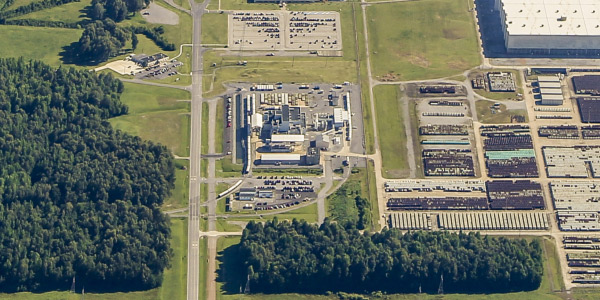By Amanda Durish Cook
FERC on Wednesday halted GridLiance Heartland’s entry into the MISO markets by blocking its $11.7 million purchase of six transmission lines from a Vistra Energy subsidiary (EC19-42).
The commission said GridLiance and the subsidiary, Electric Energy Inc. (EEI), failed to prove the acquisition wouldn’t adversely affect MISO rates. The deal involved two 161-kV substations and six 161-kV transmission lines that cross the Ohio River and connect to the EEI-owned Joppa Power Plant in southern Illinois. Vistra owns an 80% interest in EEI, with Kentucky Utilities controlling the remaining 20%. The assets in question currently sit outside the MISO footprint.
The move would have marked GridLiance’s first foray into MISO, while increasing revenue requirement rates in the Ameren Illinois transmission pricing zone. GridLiance estimated it would incur $8.2 million a year to operate the lines, 8 to 10 miles in length, compared with EEI’s $4.6 million in costs. Once the transaction closed, GridLiance said it would transfer functional control of all six lines to MISO by 2022. The request was submitted to FERC late last year.
GridLiance and EEI claimed the increased rate requirement would be offset by the transaction’s benefits, including use of EEI’s existing interconnection with the Tennessee Valley Authority to ease the burden on MISO’s north-to-south constraint, elimination of some pancaked rates and the expansion of the RTO’s footprint by adding transmission that can import power from neighboring balancing authorities.
But the six lines, originally constructed for the sole purpose of powering the U.S. Energy Department’s now-defunct Paducah Gaseous Diffusion Plant uranium facility, aren’t exactly in high demand now, incumbent transmission owner Ameren argued. EEI reconfigured its transmission system to disconnect from the Paducah plant in 2017. Four of the lines connect with TVA, while the other two connect with the Louisville Gas & Electric/Kentucky Utilities balancing authority area.
Ameren challenged GridLiance and EEI’s beneficial claims, arguing that no entities — except those already affiliated with EEI — have ever requested service over the lines in the last 25 years. Ameren also contended that neither GridLiance nor EEI undertook analysis to determine the likelihood of new transmission customers and pointed out that MISO already has interconnections to the TVA and LG&E/KU areas.
FERC agreed with Ameren, calling the supposed benefits “non-quantifiable” and unable to counteract an “admitted” increase in rates.
The commission also pointed to a GridLiance witness statement that “regardless of whether GridLiance Heartland purchases the EEI transmission facilities, those facilities will be placed into MISO’s functional control” because Vistra was already in the process of transitioning “several” units at the Joppa station into the RTO.
“We conclude that the benefits from integration of the transmission assets into MISO would occur irrespective of the proposed transaction,” FERC said.
While FERC wouldn’t speak to other factors regarding the merger because of the rate impact issue, it said its rejection was without prejudice and it invited the parties to file a revised acquisition proposal.




